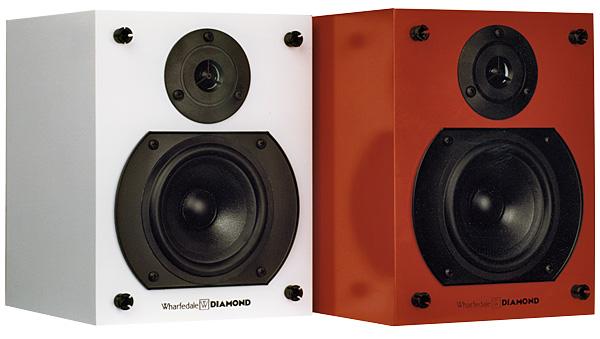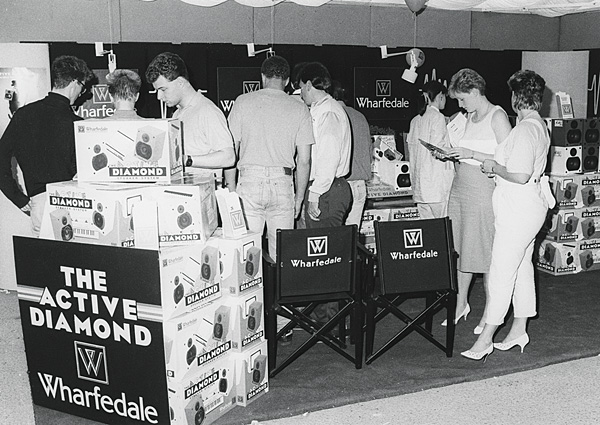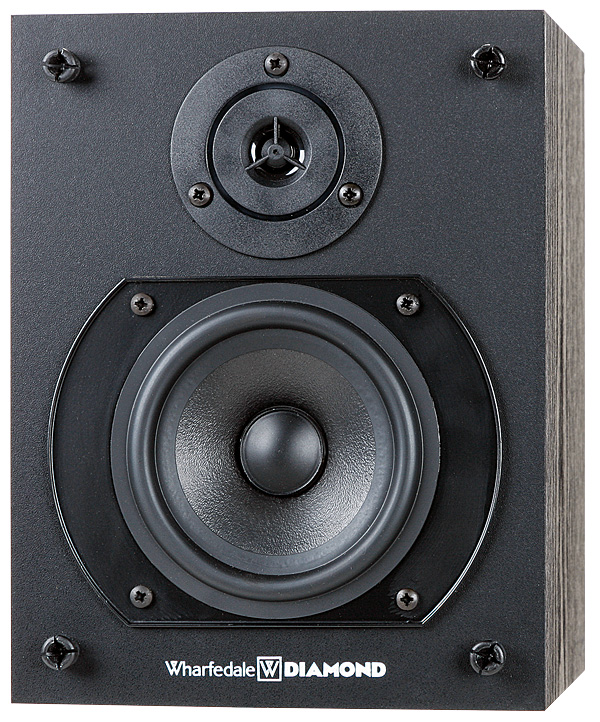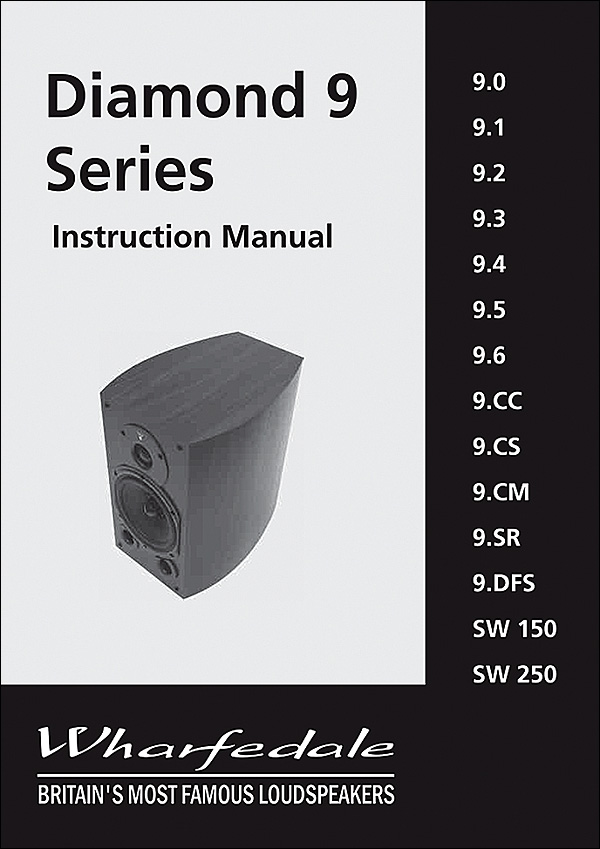Wharfedale Diamond loudspeaker

 Welcomed with open arms by those seeking a quality speaker for use in a tight space, the Diamond created the market for affordable mini monitors. How will it sound today?
Welcomed with open arms by those seeking a quality speaker for use in a tight space, the Diamond created the market for affordable mini monitors. How will it sound today?
Loudspeakers are surely the most fashion-conscious segment of the hi-fi market. There are Japanese amplifiers on sale today that look little different to their predecessors being sold in the late '70s. Yet the same 'period look' can hardly be said to be popular when it comes to speakers.
For example, almost no company manufactures massive, wide-baffle boxes in any quantity these days, with numerous drive units complementing a chunky 12 or 15in woofer. Arguably, it was the Wharfedale Diamond – a small budget standmount originally launched in 1984 – that catalysed the transition from big boxed behemoths to mini monitors.

Wilfully Obscure
There were some small speakers that won critical acclaim in the '70s of course, but they were far from mainstream products – indeed they were regarded almost as wilfully obscure. The BBC LS3/5A and Videoton Minimax, for example, were bought by people with very real space constraints who simply could not house conventional designs. Yet the advent of the Diamond began a trend to downsizing.
Although tiny compared to conventional bookshelf models, the Diamond sold in droves. Buyers realised that if you didn't mind losing the bottom octave of bass, you could get a genuinely musical sound for not very much money at all. The baby Wharfedale was cheap, easy to position, looked cute and did the job better than expected – what was not to like?
Soon it was being used in budget systems and more expensive ones alike. Many hardcore '80s audiophiles ended up spending more on their sources and amplification so it wasn't unusual to find the speakers on the end of a Linn LP12/Naim NAIT turntable/amp combination, for example. By the end of the decade, a sea of compact two-ways, from Linn Kans and Mordaunt Short MS100s to Celestion SL6s and Epos ES14s, ruled the roost. Small was in vogue, and that's why Wharfedale's little loudspeaker is so important in the great scheme of hi-fi history. Affordable, cool looking and fun – it caught the zeitgeist. In a brave new space-aware world, the dinky Diamond fitted perfectly.

Total Sound Recall
The Wharfedale Diamond was effectively the 'top half' of the company's flagship TSR102 floorstander. The 'Total Sound Recall' range was designed to waft the (then) traditional British brand into the thrusting 1980s, and a long way from the bulky old school XP and SP series of speakers that had been the company's staple diet for a decade or more.
Work began in 1981, when its designers put a 20mm Audax plastic dome tweeter and Wharfedale's own 110mm long-throw polypropylene mid/bass unit into a tiny 5.2 litre black vinyl wrapped cabinet. Just two crossover components were used, plus a resistor to balance the tweeter.
The box was a thin 12mm chipboard affair complete with wood-effect vinyl wrap. It looks rather average now, but its crisp, blocky proportions and black finish caught the spirit of the time. A ducted port fired out of the rear to give the Diamond a semblance of efficiency while the very first models sported spring-clip terminals. These were soon replaced by simple speaker binding posts. The result was a dinky loudspeaker, just 240x186x191mm (hwd), with a relatively benign impedance of (nominally) 8ohm, said to work with amps of 'between 15 and 50W RMS'.
Sensitivity was 86dB/1m on paper, meaning its 50W maximum input power was never going to sound very loud, and by around 80Hz bass was all but gone. The sensitivity figure was still way better than that of some small speakers of the period – notably the BBC LS3/5A – but it still took a pretty robust power amplifier to drive it. Fortunately, these were far more plentiful than just a decade earlier, and the small Wharfedale Diamond found itself being used with amplifiers such as NAD's 3020, Creek's CAS4040, Mission's Cyrus 1 and Arcam's Alpha – all of which were able to get more than just a squeak out of it, so widening the speaker's appeal.

Diamonds Forever
Still, there was a school of thought that regarded the Diamond as too bass-light. This was exacerbated by the rise of CD, some early players sounding shrill, especially to the ears of those who had been listening to ultra-smooth vinyl sources. At the same time, most amplifiers were not configured for the higher 2V output voltage of most CD players, which aggravated matters further.
With this in mind, Wharfedale launched the Diamond II just a year after the original design. Smoother-sounding, it may have lost a little character along the way, but it was now a far better real-world loudspeaker. The company then began experimenting with the concept. Next came the Super Diamonds, with real wood cabinets instead of a vinyl wrap. They were nearly twice the price but didn't sound twice as good, so were not a huge success.
Another interesting variant was the Active Diamond, a 'powered passive' with amplifiers built in. This sounded surprisingly good – far more muscular than you would expect given the tiny cabinet. But audiophiles were evidently not convinced, because it didn't sell in large numbers.
Most Polished
More iterations appeared, to consolidate the range. There was the Diamond Pro with its higher 100W power handling and then the Diamond 3 arrived. These were arguably the last of the classic-looking Diamonds, although sporting subtle tweaks to the styling – including the company's revised logo. Again the original cabinet volume was retained, the mid/bass unit was still a 110mm mineral-filled homopolymer (MFHP) item but the tweeter was changed to a 19mm LMP dome.


















































